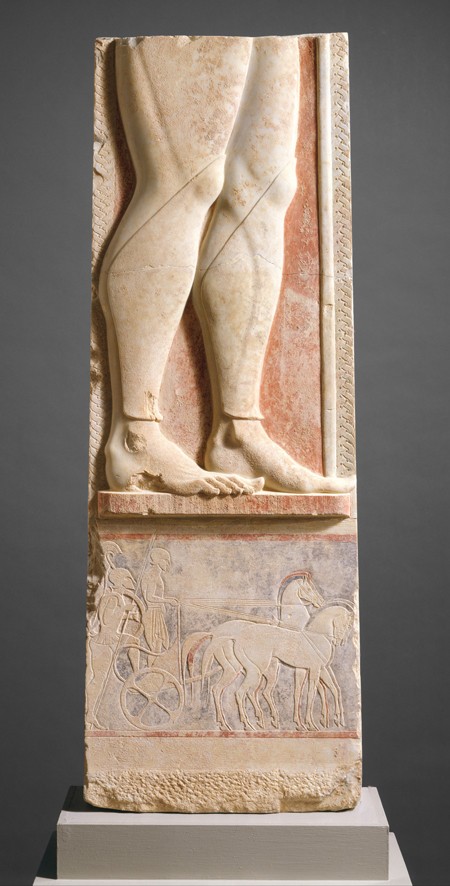Most Greek art of the Archaic and Classical periods (sixth to fourth
centuries BCE) does not appear emotional to modern eyes, especially when it is viewed against artistic developments in the eras that followed. Considerations of emotion, as a result, are largely absent from traditional histories, which generally measure the possibility of a viewer’s emotional engagement according to the art object’s perceived style or realism. In contrast, my dissertation marshals an abundance of evidence to demonstrate that, for ancient viewers, emotional engagement was central to the experience of art. By separating emotion from a history of style, I excavate a mode of looking, developed already in the Archaic period, that compelled viewers to treat works of art as having intellectual and psychological agency.
Emotion, in my formulation, is a form of subjective experience cultivated through cultural practice. In order to trace the implications of this dialectic on art-viewing, I focus on a single emotion—pity (oiktos)—which ancient sources suggest is deeply felt on a subjective level even as it was culturally conditioned. Pity, in these accounts, is motivated by an analytic disjunction between what is visibly at hand and what is materially absent, and I explore how this disjunction finds formal expression in the work of art. My sources include not only surviving works of art but inscriptions—especially those that accompanied sculptures—and ancient literature, including both poetry (especially epic and tragic) and prose (especially philosophical texts). Pity, as a result, provides a structural framework within which not only different works of art but also different forms of cultural expression can be linked together through their affective content.
The most revealing sources for the relationship between art and pity derive from the funerary context, and as a result the bulk of my dissertation focuses on funerary art. The first two chapters reevaluate the function of Archaic funerary sculpture. Through a detailed analysis of epigraphic and textual sources, I trace how the disjunctive nature of pity was expressed through a variety of sculptural techniques, and I reevaluate important questions about Archaic funerary art, such as the nature of the Archaic “smile” and the relationship between sculpture in the round and in relief. Examining these questions through the lens of emotion helps me account not only for the formal appearance of different individual monuments as well as for the break in their production in Athens following the end of the Archaic period.
The third and fourth chapters examine Classical funerary monuments
from Athens. My investigation of the ways in which ancient viewers
interacted physically and emotionally with these monuments allows me to present a new way of understanding their formulaic appearance. Working through a variety of theoretical approaches that explore how emotion is related to artistic form, I argue that, rather than reduce an individual monument to a mere instantiation of a type, the use of repetitive formulas enabled individuals to inscribe their personal grief within broader forms of cultural practice. This interpretive move enables me to treat configurative details of different funerary sculptures as embedding emotional meaning in their very form—form that was itself conditioned by standardized artistic practice. The result is a model for understanding how the perceived emotional subjectivity of an individual viewer might be developed and expressed within a broader cultural system. An extended epilogue pursues the historical and political implications of this model beyond the funerary realm in Classical Athens by examining other types of works of art that demanded pity including red-figure pottery and architectural sculpture from the Parthenon.
Although focused on a single emotion in a particular historical moment, my dissertation develops a framework for studying the relationship between art and emotion that has much broader applications. In recent years, philosophical, anthropological, and neuroaesthetic studies have revealed innate human tendencies to engage empathetically with art, but they often overstate the transhistorical application of their findings. Paying close attention to how emotions are nurtured or repressed in a given cultural context allows us to see how such innate capacities can be transformed into social practice. Such research can in turn correct and nuance assumptions and cultural biases inherent in contemporary visual practices that might otherwise go unnoticed. The cultural distance of ancient Greece combined with its rich archaeological and textual record allows it to serve as an ideal test case for art historians concerned with the relationship between our own subjectivities and broader cultural imperatives in any time or place.
